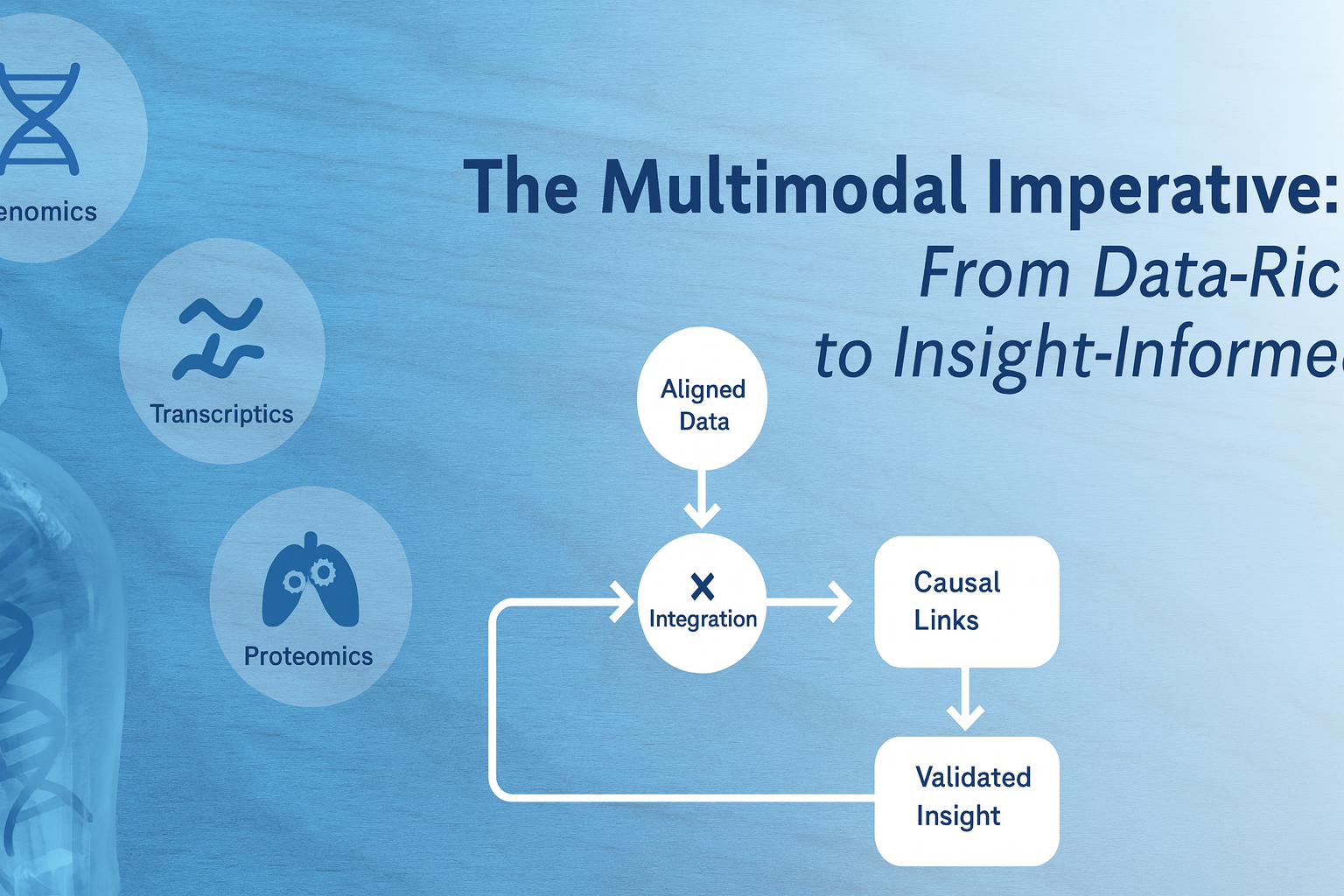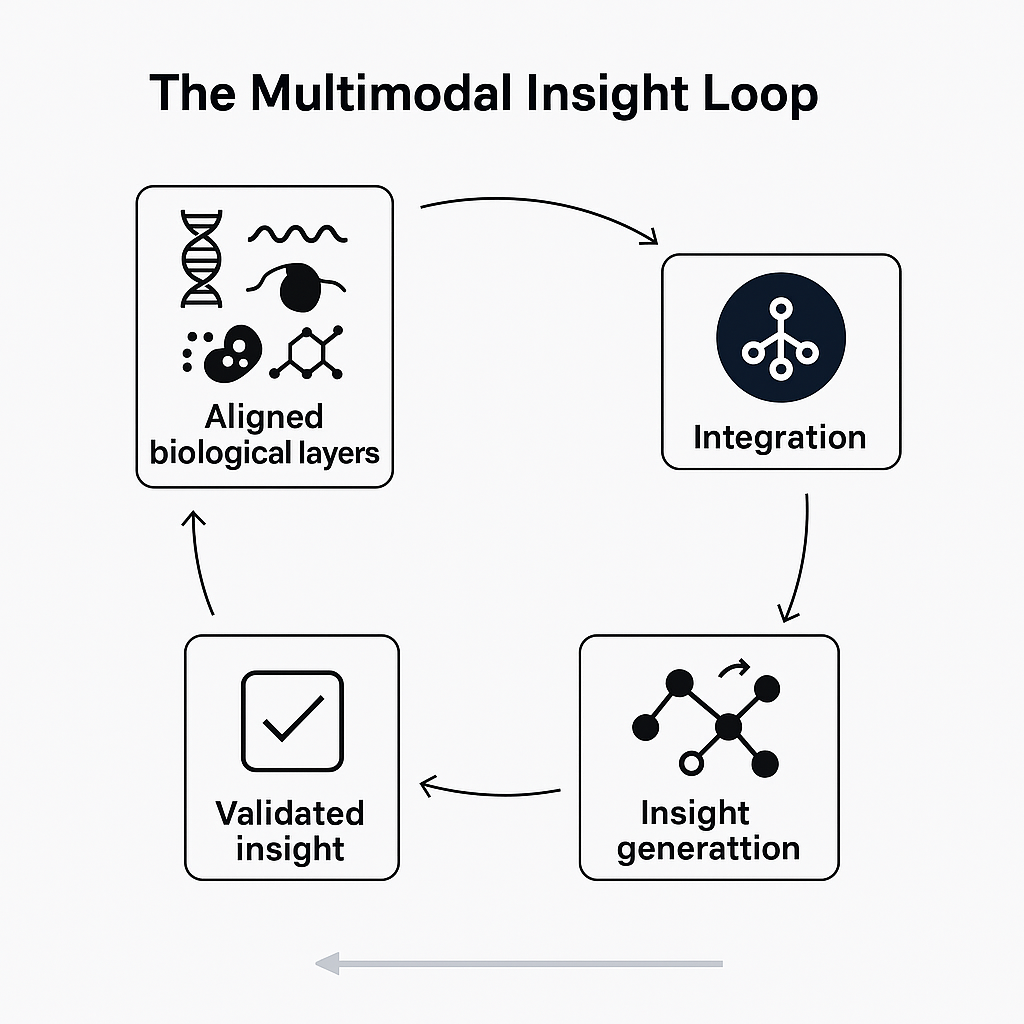PrecisionDiagnostics
Multimodal integration is revolutionizingprecision medicine by resolving diagnostic ambiguities that single-modalityapproaches cannot. In clinical genomics, for instance, transcriptomic data cansuggest disease-linked pathways, but it remains agnostic to whether these RNAsignals translate into functional protein-level changes. The integration ofproteomics acts as a critical validation step, confirming whether elevated RNAlevels result in corresponding protein abundance or modification. This cross-modalverification drastically reduces false positives and leads to more confidentdiagnostic calls. The clinical impact is significant: as cited previously, astudy on lung cancer demonstrated that integrating RNA and protein profilesimproved the prediction of patient response to immunotherapy by 36% over modelsusing RNA data alone [1], directly enabling more accurate and personalizedtreatment decisions.
DeconstructingCellular Heterogeneity
In single-cell biology, accuratelyclassifying the vast diversity of cell types and states requires moving beyonda single molecular lens. While transcriptomics provides a foundational view ofgene activity, it often lacks the specificity to distinguish betweenimmunologically or developmentally similar subtypes. Integrating proteinabundance data, particularly through techniques like CITE-seq thatsimultaneously measure RNA and surface proteins in single cells, adds a cruciallayer of functional definition [6]. This combined approach sharpensclassification accuracy, prevents misclassification, and is indispensable infields like immunology and neurobiology, where subtle shifts in cellularidentity define function and dysfunction.
PrioritizingTherapeutic Targets
The arduous journey of drug discoveryhinges on identifying targets that are not merely correlated with disease butare functionally causative. Transcriptomics can generate a long list ofcandidate genes with dysregulated expression, but it cannot discern which ofthese RNAs are efficiently translated into stable, functional, and"druggable" proteins. Integrating proteomic data creates a essentialfilter; it allows researchers to prioritize targets that show concordantdisruption at both the RNA and protein level, including criticalpost-translational modifications. This strategy de-risks target discovery byfocusing efforts on leads with a higher probability of biological relevance.This approach has proven successful in areas like autoimmune disease research,where combined RNA-protein profiling has uncovered novel, functional signalingpathways involved in pathogenesis that were invisible to transcript-onlyanalysis [3].
Illuminating RareDiseases
Rare disease research faces the uniquechallenge of deriving robust insights from extremely small patient cohorts,where traditional unimodal analyses are often underpowered. Multimodalintegration provides a powerful solution by triangulating weak but consistentsignals across complementary data types, effectively increasing the analyticalresolution from limited material. A seminal example involved a study ofpediatric neurodevelopmental disorders where researchers integrated exomesequencing, RNA expression, and metabolomics from just six patients [4].Individually, each dataset yielded limited findings. collectively, however,they converged to clearly identify a shared disruption in a key oxidativephosphorylation pathway. This multimodal evidence was sufficient to generatenew, testable diagnostic hypotheses, demonstrating how integration can createactionable insights where conventional approaches fail.







